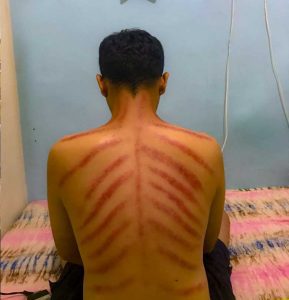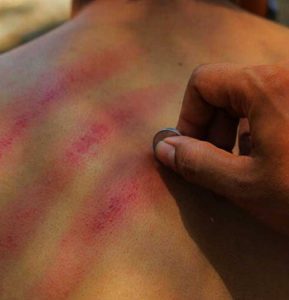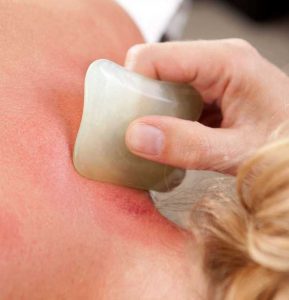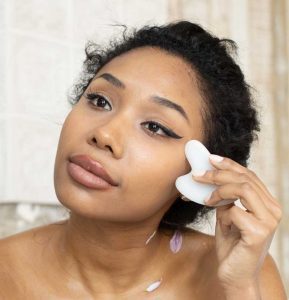Not Only In Indonesia, Kerokan Are Found in Various Other Countries as Well
"Indonesian people, especially Javanese, have a traditional treatment method known as kerokan. This traditional treatment method has been around for a long time and has been passed down from generation to generation. Interestingly, similar treatment methods are also found in various countries in the world."Published by : Kurnia HD - 11/01/2025 09:38 WIB
0 Minutes read.

Since long time ago, kerokan (coin rubbing) have become the local wisdom of the Indonesian people in terms of health and treatment. You could say kerokan is the mainstay for first aid when the body catches a cold. Indonesian people, both in rural and urban areas, are quite familiar with this healing therapy.

Sumber: portalkudus.pikiran-rakyat.com
Kerokan is believed to be able to cure minor health complaints, such as cold, flu, or flatulence. It is not known for certain when kerokan began to be used by our society, this therapy has been around for a long time and has been passed down from generation to generation.
Kerokan (or also called kerikan) usually uses a blunt object as the rubbing tool. It can be made of natural stones, coconut shells, or coins. The blunt ends of this tool serve to rub the skin, usually the back, so as not to cause lacerations.

Sumber: www.halodoc.com
Efect of Kerokan
Many people like to do kerokan when they catch a cold, because there is a comfortable and fresh effect after the treatment. This is not a mere myth. The Halodoc page explains that kerokan can trigger the production of endorphins which are natural morphines in the body, thereby relieving pain.
Kerokan can also dilate blood vessels. When you did kerokan, red blood cells and oxygen are easier to circulate throughout the body. The effect is the body feels fresh.
In addition, kerokan will suppress the production of prostaglandins, a fatty acid that makes the body sore. Reduced prostaglandins, the body becomes fresher and fitter.
Kerokan From Various Countries
Traditional treatment of kerokan is not only practiced by Indonesians. Neighboring countries such as China, Vietnam, and Cambodia also have traditional treatments similar to kerokan.
In China, kerokan is called Gua Sha. The tools used are usually made of jade stones, buffalo horns, and soup spoons. Usually, Gua Sha tools have been forged in advance and used many times so that they match the user’s habits. Because of this, there are many different forms of Gua Sha tools.

Sumber: https://www.klikdokter.com/
While kerokan tend to be applied to cure colds, Gua Sha is applied more for health purposes. Quoted from the Health Kompas page, Gua Sha is applied to increase the body’s immune system. In addition, Gua Sha is also believed to be able to relieve joint muscle pain. A 2017 study showed that Gua Sha can accelerate muscle healing in weightlifting athletes.
If in Indonesia kerokan is only for the back, Gua Sha is also for facial treatments. Gua sha for beauty usually uses natural stone or jade which is believed to be good for the beauty and health of facial skin.

Sumber: loaskin.com
In Vietnam, traditional medicine similar to kerokan is called Cao Gio. Quoted from the a journal article, Cao Gio (Coin Rubbing): Vietnamese Attitudes Toward Health Care, explained that Cao Gio is a traditional medical practice by rubbing the skin with coins.
From this insight, Cao Gio can be said to be more similar to kerokan in Indonesia than Gua Sha. Cao Gio is also applied to cure complaints such as colds, aches, or fatigue.
In Cambodia, kerokan is called Goh Kyol, which in English is called rubbing the wind. The word kyol means wind disease or we often call it masuk angin (a cold).
There are not many references that discuss Goh Kyol, the practice of Goh Kyol is very similar to the kerokan we usually do in Indonesia.
Kerokan or whatever it is called in various other countries, still exist today. This custom has even spread to Europe and America through the people of Asian descent who live there.








